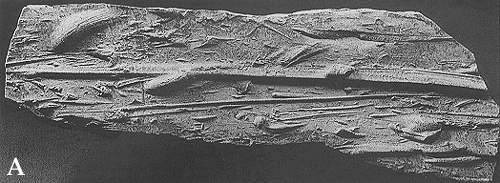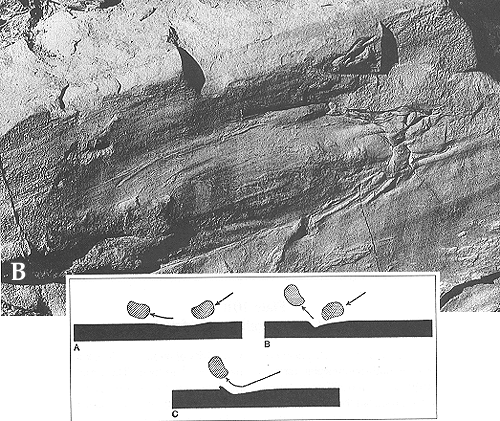
>
Marks produced by impacting objects: bounce casts, prod casts, brush
casts
Plate 102

>
Marks produced by impacting objects: bounce casts, prod casts, brush
casts
Plate 102
The small groove casts and striation casts in plate 102 A are associated with short marks due to impacting tools. A certain deviation from parallelism can be noted in both groups; it can be attributed to statistical fluctuations around the mean direction of a single current, to winding paths of flow lines, irregular whirls, etc. Angles greater than 40° would suggest, instead, the passage of more than one current, and sedimentologists would face the problem of deciding which system was the "good one" for indicating the paleogeographic trend.
Three main types of impact casts can be recognized: 1) bounce casts are symmetrical in longitudinal section (inset A) and, consequently, do not allow determination of the current direction; 2) prod casts (inset B) are asymmetrical, with a more pronounced relief on the down current end (contrary to flute casts); 3) brush casts (inset C, and plate 102 B) are similar to bounce or prod casts but the frontal end is marked by one or more wrinkles due to mud dragging.
Try do identify the different types in 102 A and, if possible, the current direction. Pay attention to the similarity between prod casts and flute casts, which give opposite indications. In this respect, remember that prod casts commonly occur as isolated marks, while flutes rarely do. Moreover, tool marks and flute marks are frequently (but not always--see plate 103) mutually exclusive or almost so. On many bed surfaces, you will find either one type of structure or the other.
Slabs from sandstone beds of Marnoso-arenacea Formation, northern Apennines.
| Photo: A P. Ferrieri 1992. |